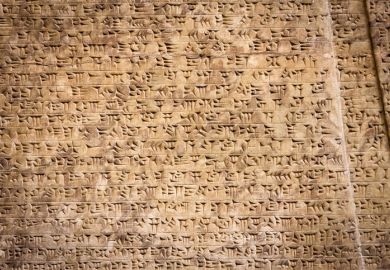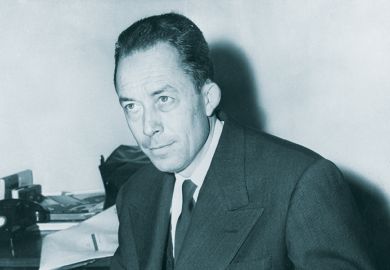Sappho is a tease. She is the most famous female writer in history and the earliest female poet, writing 2,600 years ago. She is the tragic heroine, abandoned by her lover Phaon, who leapt from the cliff on the island of Lesbos to drown herself in the sea, the first lesbian who gave her name to a love that dare not speak its name. And yet, until the beginning of the 20th century, when archaeologists dug up fragments of poetry at Oxyrhynchus in Egypt, readers knew of only two of Sappho's poems, which happened to have been quoted, and therefore preserved, in ancient treatises on poetry by Dionysius of Halicarnassus and by Longinus. One of these two poems, known as Fragment 31, is not even complete. Faced with a dearth of evidence, readers have compensated with lurid fantasies. Sappho is the projection of their desires. Hers is a long history of "making something out of nothing".
The Sappho History joins this tradition of being "not a book about an authentic Sappho but about the many different Sapphos who come and go in the popular imagination". It tells of Sappho's magnetic pull on writers' desires, from the 18th-century poet Mary Robinson, who was briefly bought as a mistress by the prince regent, and who subsequently sold her sonnet sequence Sappho to Phaon to eke out a living; to Baudelaire and Swinburne, decadent poets fascinated by Sappho's lesbianism, who broke her body (both mythic and textual) into fragments in their poetry; and to Virginia Woolf, who found in Sappho an example of a woman who was free to write because she had a room (or island) of her own.
Margaret Reynolds teases the reader too. While she claims this is a book more about the "myth" of Sappho than the fragments or the history of Sappho scholarship, in fact it is packed with learned detail, lightly handled, about the Greek texts, about who read what and how much evidence was available.
The most moving chapter follows Tennyson and Arthur Hallam as they read Fragment 31 together as students and respond to it in their poetry.
Sappho's poem evokes the ambivalent triangulation of desire, as the female narrator's jealousy of the man sitting close to the beloved woman morphs into her own physical disintegration under love's fierce flame. According to Reynolds, Tennyson's early poems, apparently about love for women or their love for men, are inflected by the desire of Fragment 31 and shadowed by the presence of a third, a man, Hallam, the listener or "friend", who makes a poet out of Tennyson. When Hallam died aged 22, his memory was to haunt Tennyson just like Sappho's fragments.
In contrast, the most entertaining chapter discusses an impressive range of pictures of Sappho, derived from the myth rather than from a knowledge of the texts, that tell us more about 19th-century beliefs about women's independence and sexual proclivities than anything about the poet. Reynolds suggests the changing symbolism of Sappho's lyre, from the mouth of the poet to a visual euphemism for a more erotic orifice.
This is a beautifully written, passionate and poetic book. It has important things to say about women's writing, about love, about lyric poetry, about myth and celebrity, and about elegy and loss. And it joins a growing number of books that demonstrate that Victorian Hellenism was no dusty, dry affair but complex and fascinating.
Jennifer Wallace is a fellow of Peterhouse, Cambridge University.
The Sappho History
Author - Margaret Reynolds
Publisher - Palgrave Macmillan
Pages - 311
Price - £19.99
ISBN - 0 333 97170 1
Register to continue
Why register?
- Registration is free and only takes a moment
- Once registered, you can read 3 articles a month
- Sign up for our newsletter
Subscribe
Or subscribe for unlimited access to:
- Unlimited access to news, views, insights & reviews
- Digital editions
- Digital access to THE’s university and college rankings analysis
Already registered or a current subscriber? Login



